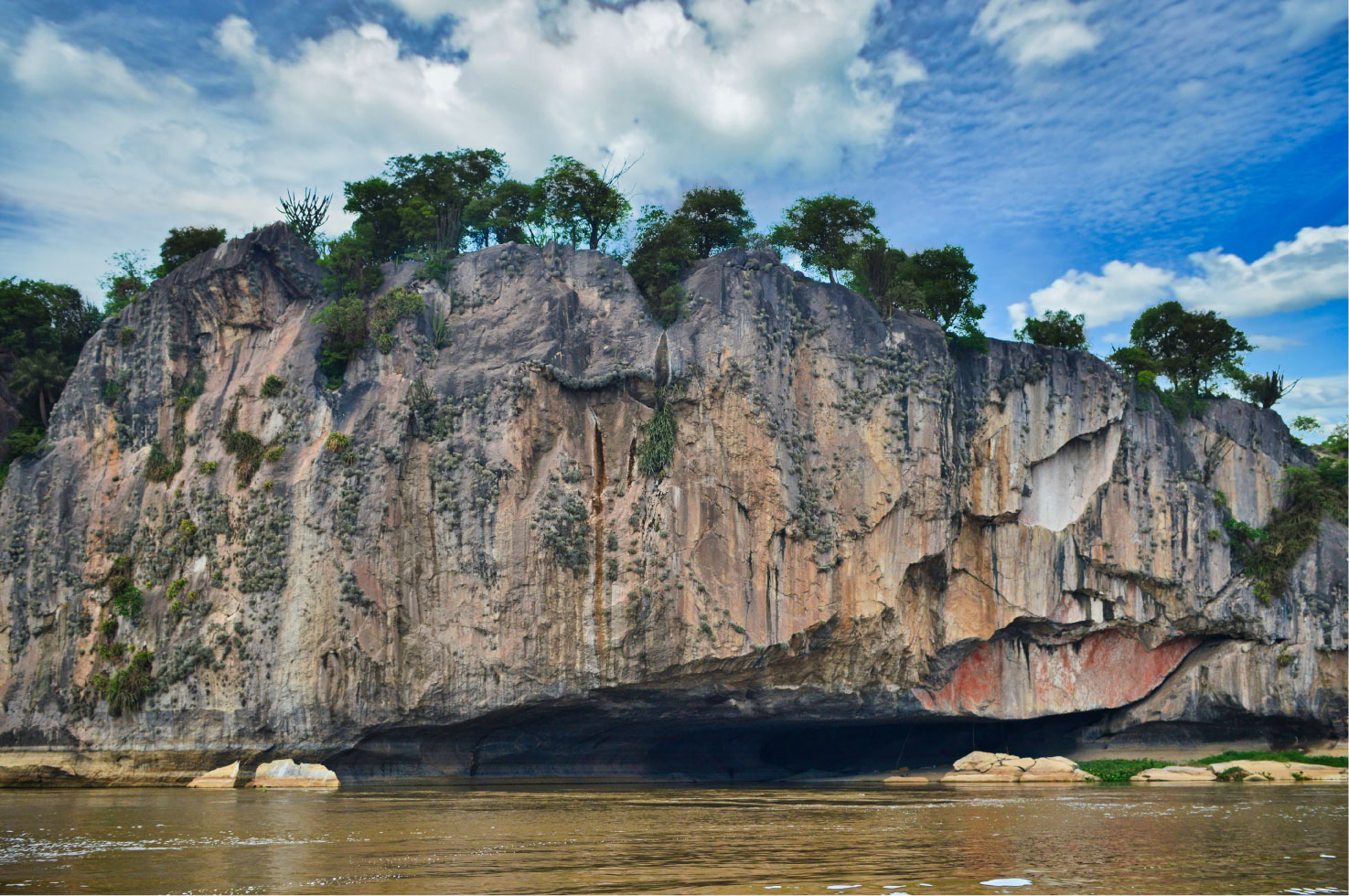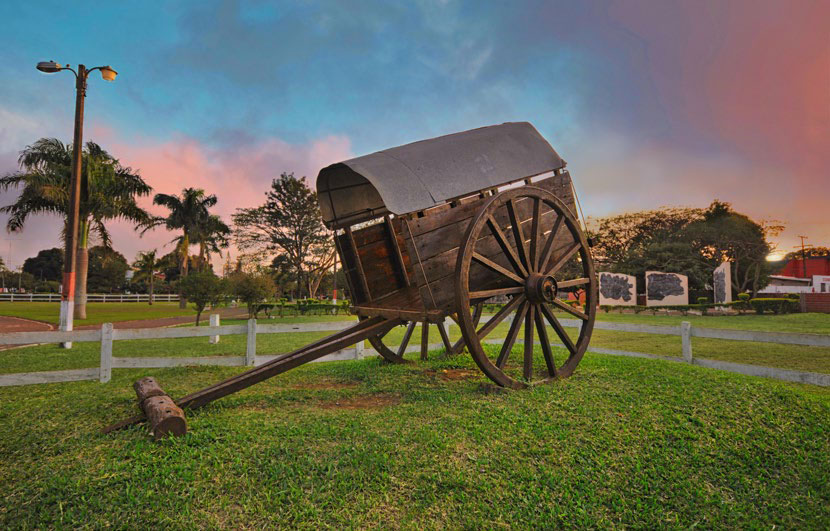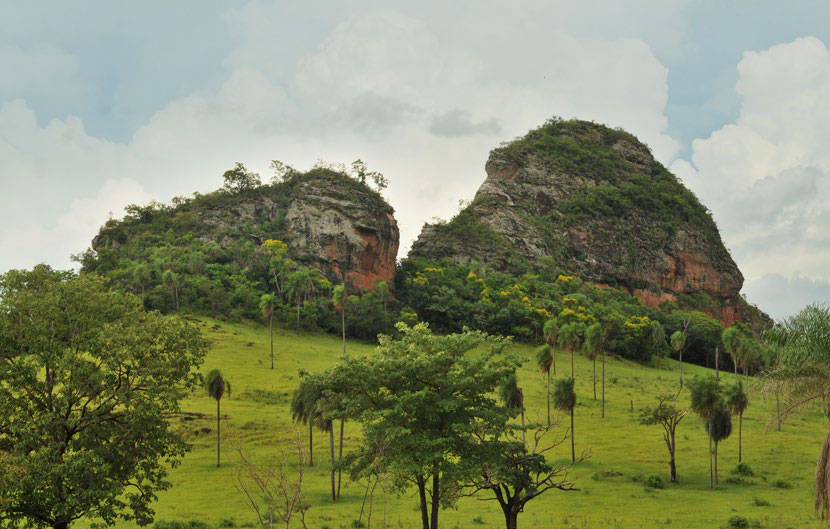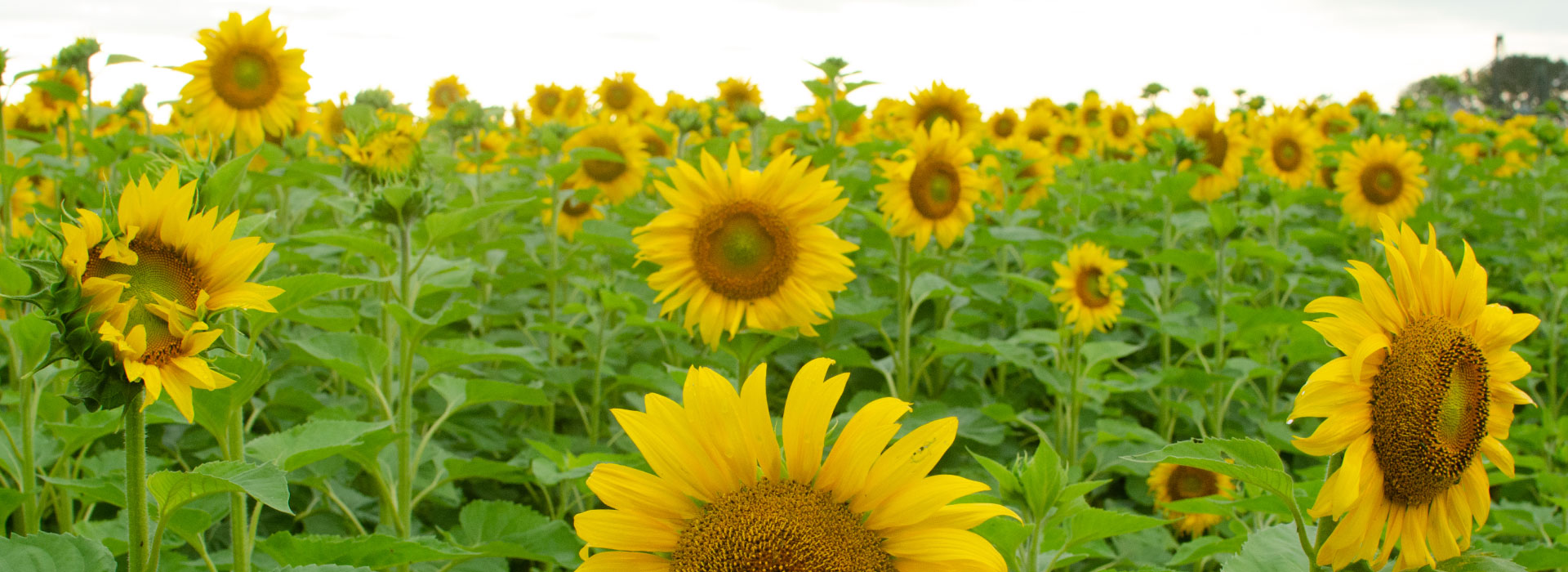NORTHERN ZONE
Departments: Concepción, San Pedro y Amambay
Departments: Concepción, San Pedro y Amambay


The Northern Zone of the country is a center for adventure, exploration, and entrepreneurship. It is perfect for rural tourism, hikes, shopping, and expeditions along the Paraguay and Apa rivers and their tributaries, while discovering the hidden caverns and geological secrets that hold immense scientific and cultural value.
Today, the area’s natural, economic, and demographic potential attract large investors who have begun to land in the region, with cement, meat processing plants, and pulp mills that operate under strict conditions and socio-environmental measures.
The gateway to the Concepcion Department is its capital, Concepcion, also known as “The Pearl of the North”. Its historic center is made up of colonial houses that give it a touch of bucolic nostalgia. This community is characterized by its appreciation of art, culture, and history. This can be observed in the quality of its museums, such as the Open Air Museum, Museum of Contemporary Art, Museum of the Villa Real Barracks, Free Art Gallery, House of Culture and the Museum of Sacred Art. The Cathedral and the Sanctuary of the María Auxiliadora Parish is also noteworthy, with its imposing statue of the Virgin of María Auxiliadora, which is 24 meters high.
To the north of the department, we reach the city of Vallemí. Its magical caves are a must-see destination for those that consider themselves nature and adventure lovers. In recent times, more than 50 caves have been discovered in the department, but the best known are “Caverna 14 de Julio”, “Caverna 54”, preferred by the most adventurous; “Camba Hopo”, on the banks of the Paraguay River, just 3.5 km from Vallemí by river; and “Santa Caverna”, which keeps its ancient stalactites.

The Paso Bravo National Park, the largest protected area within the Cerrado ecoregion in Paraguay, can also be found up north.
Its fauna is rich and varied in species. It is home to 48% of the known wild mammals in the country. The Apa river basin records 103 varieties of fish and there are at least 428 species of birds, including the red and yellow macaws and the so-called harlequin. You can also see big cats like the puma and the yaguarete (jaguar), and the aguara guasu (big fox).
An authentic natural treasure, the Tagatiya Stream is also found in Concepción. The district of San Alfredo is home to 6 tourist spots that depend on the Tagatiyá, Tagatiyami and Tagatiyá Guazú streams, which are characterized by their transparent waters that allow visitors to view fish from the surface. The waters run on a calcareous base, which makes them translucent.

The San Pedro Department, with more than 150 km of coastline on the Paraguay River, stands out for its beautiful tributary rivers, lakes and numerous flowing streams that help create natural sites for recreational activities. One of the oldest cathedrals in the country is in its capital, San Pedro del Ycuamandyyu.
The city preserves old buildings, colonial houses, historical places, and legends that are part of its identity.
In the district of Santa Rosa del Aguaray, there is one of the purest, most beautiful, exotic, and mysterious nature places in the country, the Laguna Blanca, where its transparent waters of unknown depth and its white sands make it an unavoidable destination for summer, long weekends or even Easter. The lagoon has the peculiarity of being based on calcareous sand, which makes it completely transparent. Anyone with diving equipment can clearly view fish and aquatic plants even in places more than 7 meters deep.
Regarding accommodation, the region is known for its tourist inns, considering that the attractions are mostly located in rural areas. Visitors can obtain information at tourism agencies or at the National Tourism Secretariat (Senatur).

The Amambay Department, bordering with Brazil, is home to the Amambay hill range, an essential element in its physical conformation. These 300 to 400 meters high hills give the region its nickname, “Paraguay’s Terrace”. The area preserves the richest forests in the country, and a network of paradisiacal streams tempt the most demanding adventure-seekers. The abundance of watercourses and the ruggedness of the terrain give way to numerous waterfalls throughout the department.
The Cerro Corá National Park, 40 km from Pedro Juan Caballero, the department’s capital, is considered “the country’s altar”. It is the point of maximum relevance in the independent history of the country. There, one can find monuments for Marshal Francisco Solano López and those who fell with him in the last battle of the Triple Alliance War (1865-1870).
The department is full of natural and archaeological resources, including its striking caves and runic inscriptions. The Pai Tavytera indigenous community, which has its tava (population) in the area, considers the region’s hills as the “center of the universe” and abode of the supreme being.
The Northern Zone is an eco-adventure center. The Chacurrú Ecotourism complex, located 15 kilometers from Pedro Juan Caballero, combine nature and adventure to offer a unique and unforgettable experience. Here, one can enjoy the forests, with its flora, and fauna, but above all, peace, and harmony. The site offers zip lines, rappelling, tree climbing, canopy, bridges, among others.
In the Gasory Eco-Archaeological Reserve, you have the chance to see the cave inscriptions and visit the Ita Guasu Pãi Tavyterã indigenous community, original inhabitants of the region.


In the Capitán Bado district, northeast of the department, there are many waterfalls. The Aguaraymí Fall can be found there, an imposing wonder of nature over 20 meters high that is a true spectacle that activates all 5 senses. The Comelli, located in an area known as Cerro Cuatiã, which means “paper hill”, can also be found here, and another attraction is the Pira’ymí Fall; a waterfall where two streams from the Colonia Pira`y area converge.
In addition to these natural wonders, there is also the Ojo de Mar, which is the name given to a mysterious mirror of water in the middle of the mountain, located in the Rinconada district, 58 km from Bella Vista Norte. Geologically speaking, it could be considered a cenote or some kind of lake with underground tributaries. There are myths about a pair of white crocodiles that inhabit the place and rarely come to the surface. Although there are no services prepared for tourism here, a lot of people arrive eagerly searching for adventure and with the desire to participate in a photographic safari.
After soaking up on adrenaline, the region still offers surprises to visitors who like to shop. In Pedro Juan Caballero, there are large shopping malls where one can find the best brands in the world all in one place and satisfy all fashion tastes. Shoppers can also find electronics, car accessories, perfumes, beverages, and other products. Tourists can find a variety of hotels with quality accommodation in the department’s capital.

